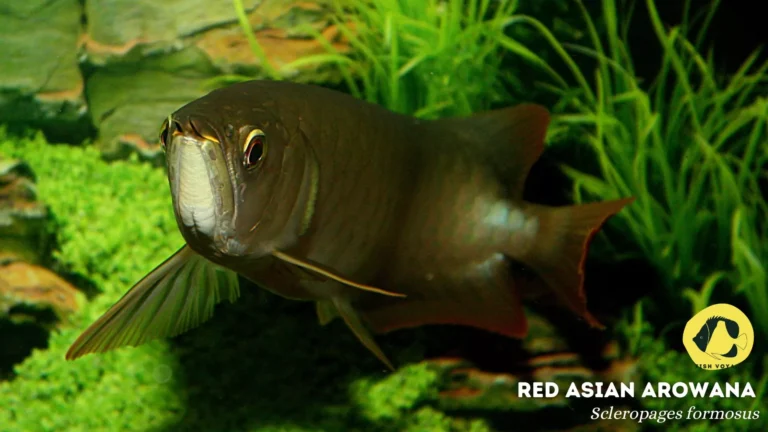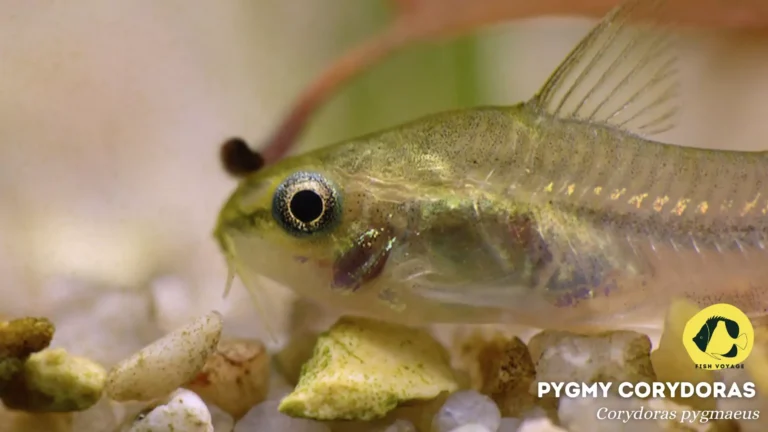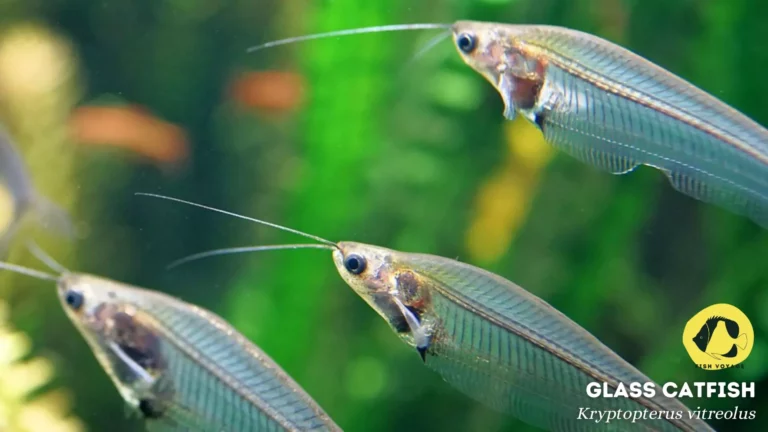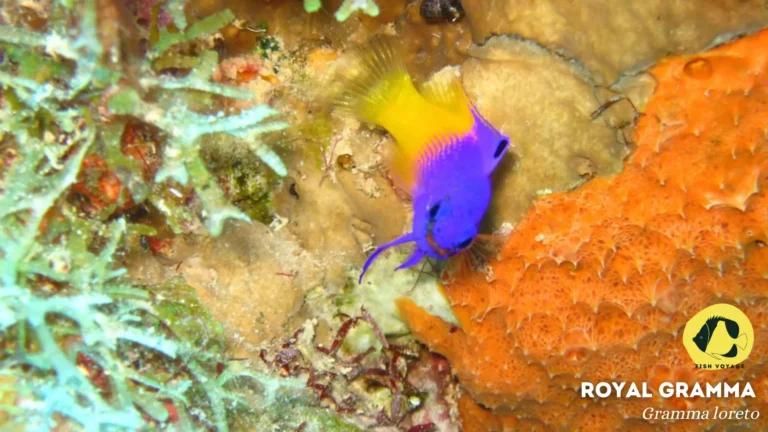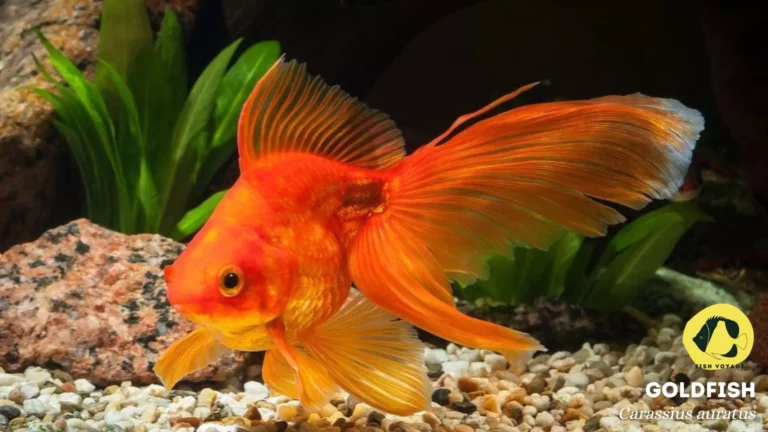List of Fish To Avoid In Planted Aquarium
In the captivating world of planted aquariums, the lush greenery not only adds aesthetic appeal but also plays a pivotal role in creating a harmonious aquatic environment. The benefits of cultivating a planted aquarium extend beyond visual delight; thriving plants contribute to water quality, oxygenation, and the overall well-being of aquatic life. However, achieving this delicate equilibrium hinges on the careful selection of fish species. Choosing the right fish is paramount to sustaining a balanced ecosystem, where plant life flourishes, and aquatic inhabitants coexist in perfect synergy.
In this exploration of “Fish to Avoid in Planted Aquariums,” we delve into the intricacies of fish-plant compatibility, guiding enthusiasts toward choices that promote both the vitality of their green havens and the health of their finned companions. Join us on this journey where aquascaping meets responsible fishkeeping, and discover the key to unlocking the full potential of your planted aquarium.
Importance of Selecting Compatible Fish
Ecosystem Harmony
In the delicate ecosystem of a planted aquarium, the wrong choice of fish can disrupt the delicate balance necessary for both flora and fauna to thrive. Certain fish species, if incompatible, may exhibit behaviors that can stress or damage the plants, compromising the overall health of the aquatic environment.
Nutrient Uptake and Plant Health
The well-being of aquatic plants is intricately tied to the availability of nutrients in the water. Incompatible fish may disturb the substrate, leading to the uprooting of plants or disruption of nutrient-rich sediments. This disturbance can hinder the proper uptake of essential nutrients by plants, ultimately impeding their growth and vitality.
Oxygenation and Water Quality
Compatible fish contribute to the overall health of the aquarium by participating in a symbiotic relationship with plants. While plants release oxygen through photosynthesis, fish provide essential carbon dioxide. However, the wrong fish, especially those with excessive activity levels or aggressive tendencies, can disrupt this equilibrium, impacting oxygenation and overall water quality.
Behavioral Considerations
Understanding the natural behaviors of fish is crucial when selecting suitable tank mates for planted aquariums. Some fish species may have a penchant for nibbling on soft plant leaves, while others may burrow into the substrate, causing disturbances. Careful consideration of fish behavior is essential to avoid potential conflicts that could harm the plants.
Preserving Aesthetic Appeal
Beyond the functional aspects, the aesthetic appeal of a planted aquarium is also at stake when fish and plants are not compatible. The wrong fish may engage in destructive behaviors, leading to a less visually appealing and less enjoyable aquatic display.
In essence, the key to a flourishing planted aquarium lies in the thoughtful pairing of fish species with the specific needs and characteristics of aquatic plants. By prioritizing compatibility, aquarists can cultivate an environment where both fish and flora coexist harmoniously, fostering a visually stunning and ecologically balanced underwater world.
High-Maintenance Fish Species
Discus Fish (Symphysodon spp.)
Known for their vibrant colors and unique disc-shaped bodies, Discus fish require meticulous care. Their high temperature preferences and specific water parameters can make them challenging to accommodate in a planted aquarium.

Angelfish (Pterophyllum scalare)
While Angelfish add elegance to any tank, their potential for nibbling on soft-leaved plants can be a concern. Their semi-aggressive nature may also lead to conflicts with other tank mates, impacting the tranquility of the planted environment.
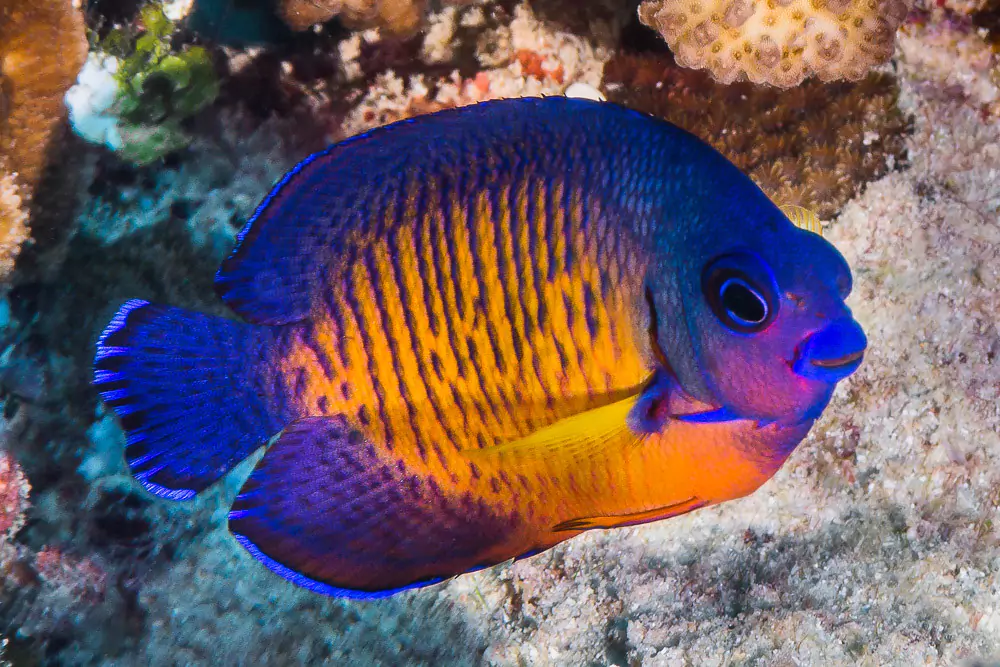
Goldfish (Carassius auratus)
Despite their popularity, goldfish can be notorious for uprooting plants and stirring up substrate, disrupting the carefully arranged aquascape. Their messy eating habits contribute to increased waste, requiring robust filtration systems and regular maintenance.
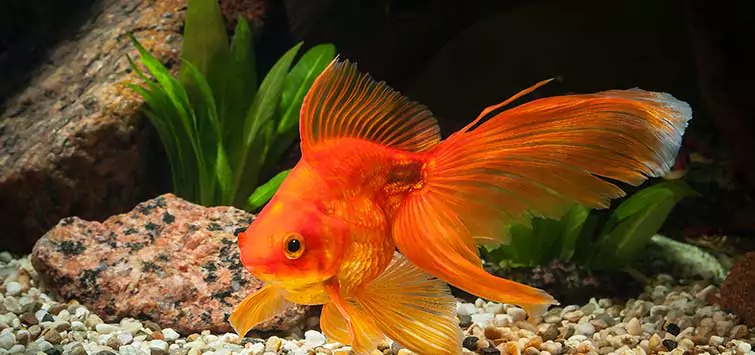
Arowana (Osteoglossum spp.)
Arowanas, with their majestic appearance, have stringent space requirements due to their large size. Their predatory instincts and swift movements may pose a threat to both smaller fish and delicate plants, necessitating a spacious and well-secured tank.
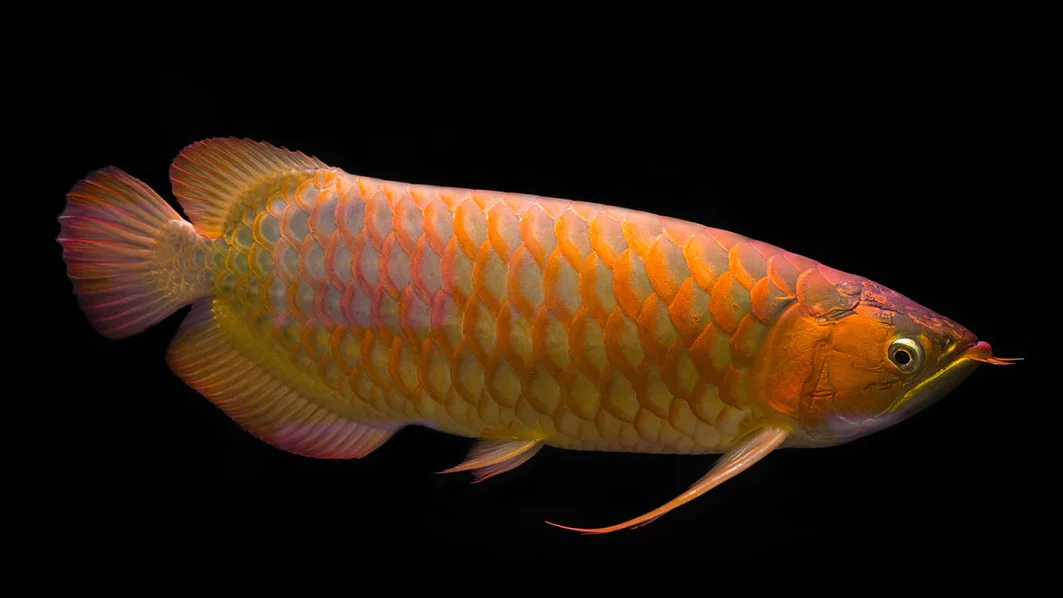
Siamese Fighting Fish (Betta splendens)
Betta fish, while stunning, are territorial and may exhibit aggression towards tank mates. In densely planted tanks, they may establish territories among the foliage, limiting the space available for other fish and potentially damaging delicate plants.
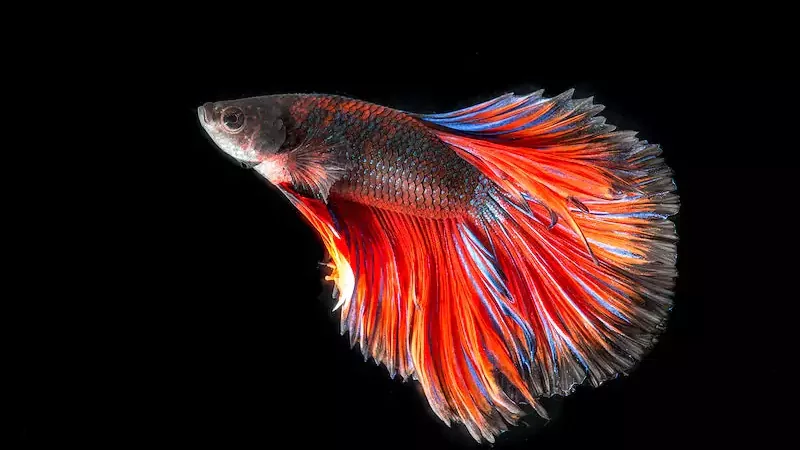
Cichlids (Various Species)
Cichlids, known for their diverse and colorful varieties, can be challenging due to their territorial nature. Aggressive behavior, especially during breeding periods, may lead to disruptions in the planted setting, making careful species selection crucial.
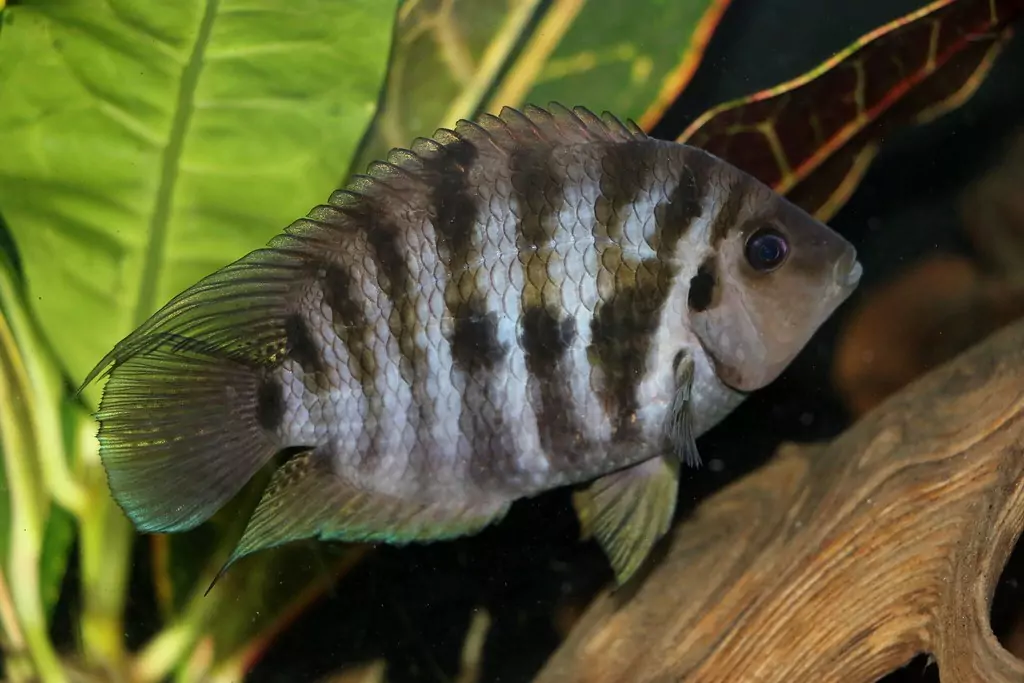
Reasons for High Maintenance
- Specialized Diets: Certain high-maintenance fish have specific dietary needs that may require additional attention to ensure proper nutrition.
- Aggressive Behavior: Aggressive or territorial tendencies can lead to disruptions, uprooting plants, and causing stress among tank inhabitants.
- Specific Water Parameters: Some species require precise water conditions, making it challenging to maintain a stable environment in a planted tank.
In navigating the realm of planted aquariums, understanding the unique challenges posed by high-maintenance fish species is paramount. By carefully considering the specific needs and behaviors of these captivating yet demanding aquatic companions, aquarists can strike a balance between the allure of these fish and the flourishing health of their planted aquatic haven.
Aggressive Fish Species
Tiger Barb (Puntigrus tetrazona)
Renowned for their vibrant stripes, Tiger Barbs can exhibit aggressive behaviors, nipping at the fins of other fish and causing stress. In a planted aquarium, their fin-nipping tendencies may extend to delicate leaves, impacting the aesthetic appeal of the aquatic landscape.
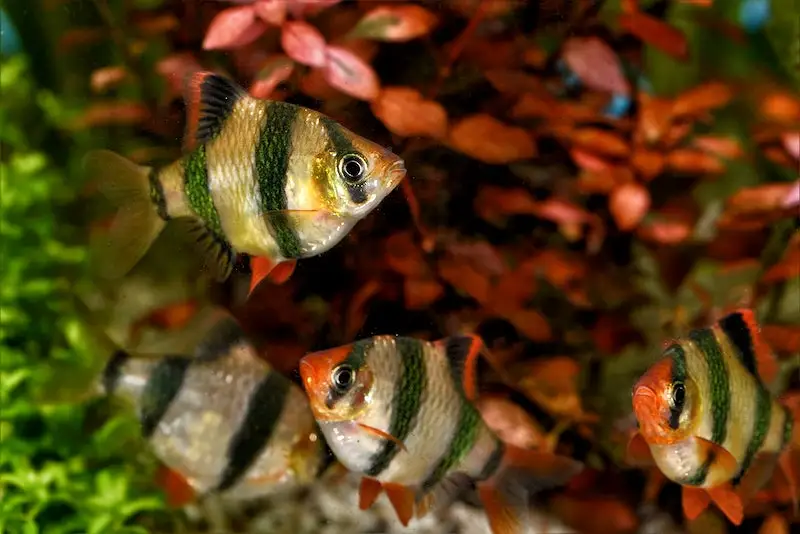
Red-Tail Shark (Epalzeorhynchos bicolor)
Despite their captivating appearance, Red-Tail Sharks can be territorial and aggressive, especially towards similar-looking species. Introducing them to a planted tank may lead to conflicts with other bottom-dwelling fish and disturbances in the substrate.
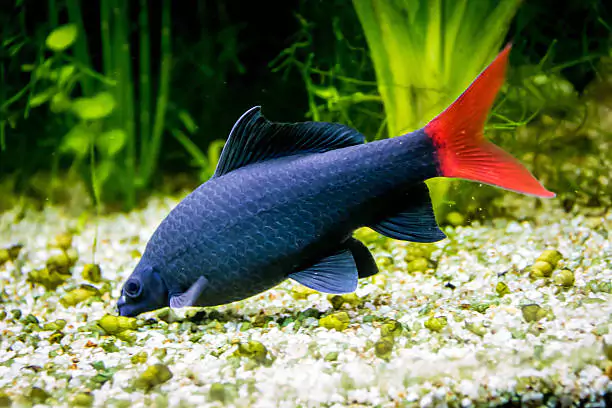
Congo Tetra (Phenacogrammus interruptus)
While prized for their iridescent scales, Congo Tetras can display fin-nipping tendencies, particularly during mating behavior. This aggression can result in damaged fins and may disrupt the harmony of a densely planted aquarium.
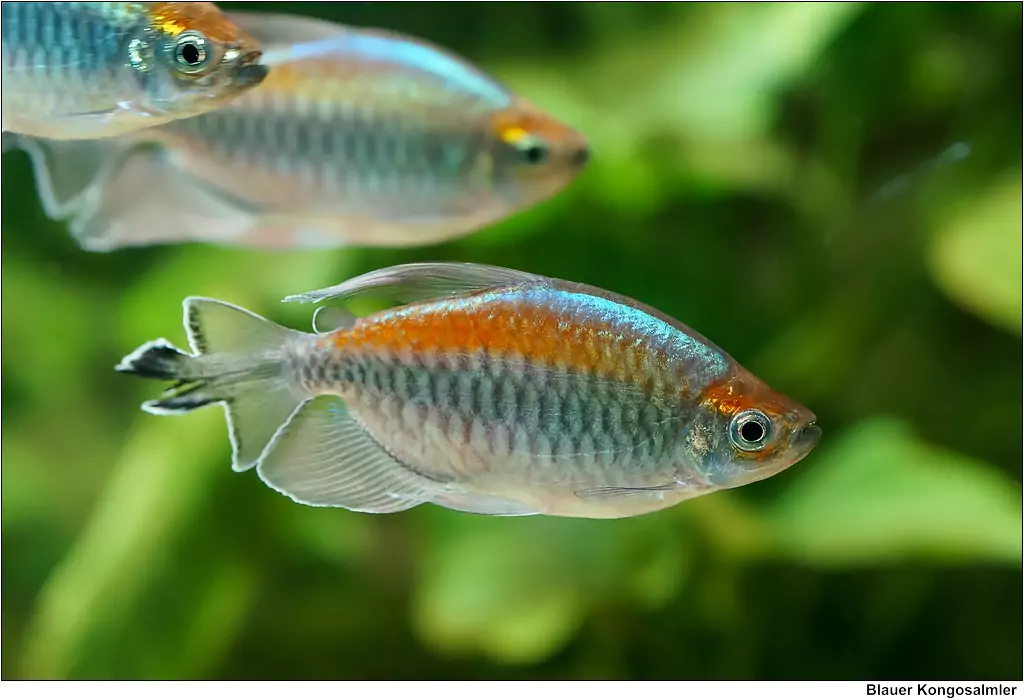
Jack Dempsey Cichlid (Rocio octofasciata)
Known for their assertive nature, Jack Dempsey Cichlids can become territorial, leading to aggressive interactions with other tank mates. In a planted setting, this behavior may result in uprooted plants and stressed aquatic inhabitants.
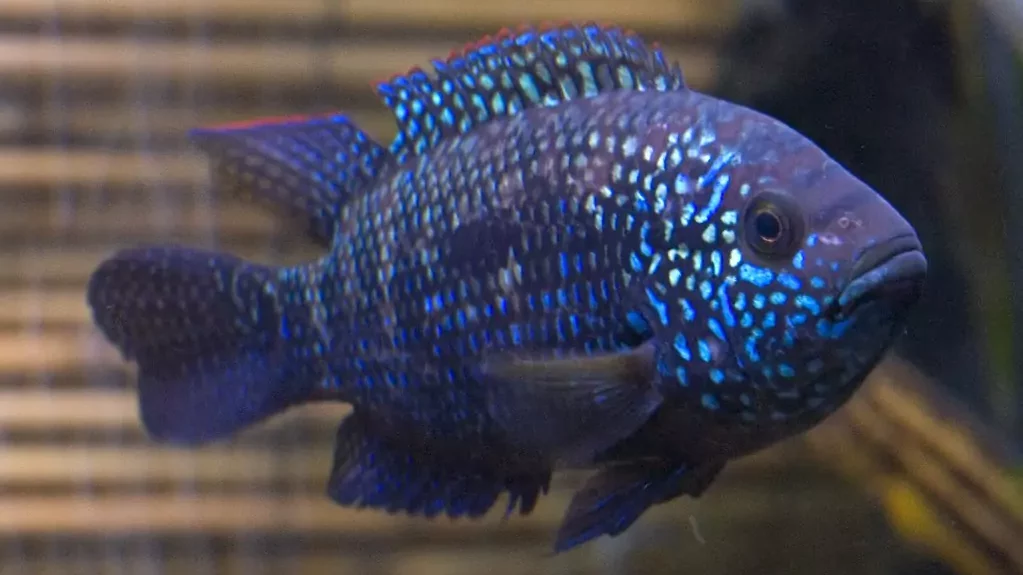
Green Terror Cichlid (Andinoacara rivulatus)
With a territorial disposition, Green Terror Cichlids can pose challenges in a planted tank. Their aggressive nature, especially during breeding, may lead to disruptions in the carefully arranged aquascape and potential harm to other fish.
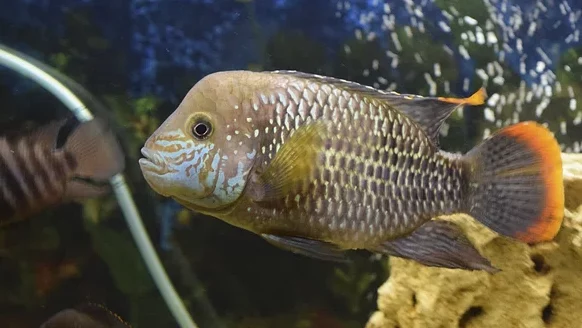
Insights into Potential Issues
- Stressed Tank Inhabitants: Aggressive fish can create a stressful environment, negatively impacting the health of other tank inhabitants, including both fish and plants.
- Damaged Foliage: Aggressive behavior may extend to plant life, resulting in torn leaves, uprooted plants, and overall damage to the aesthetic appeal of the aquarium.
- Territorial Conflicts: Territorial disputes among aggressive species can lead to constant aggression, disrupting the tranquility of the planted environment.
In the intricate tapestry of planted aquariums, the inclusion of aggressive fish demands thoughtful consideration. By recognizing the potential issues and carefully selecting tank mates that align with the peaceful coexistence of plants and aquatic life, aquarists can create a balanced and harmonious underwater ecosystem.
Plant-Eating Fish
Silver Dollars (Metynnis spp.)
Silver Dollars are notorious for their penchant for nibbling on soft-leaved plants. Their constant grazing behavior can result in the degradation of plant foliage, impacting the overall aesthetics and health of the planted aquarium.

Chinese Algae Eater (Gyrinocheilus aymonieri)
Despite their name, Chinese Algae Eaters may not limit their diet to just algae. Their herbivorous tendencies can extend to munching on tender plant leaves, posing a threat to the integrity of the planted environment.
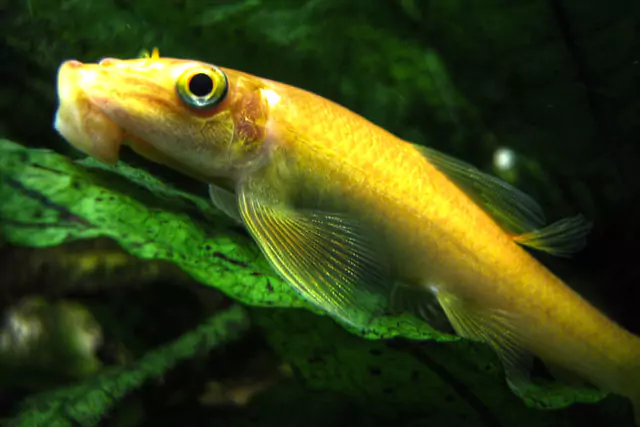
Pacu (Colossoma spp.)
While often chosen for their impressive size, Pacus have a hearty appetite that may lead them to consume or uproot aquatic plants. Their size and feeding habits can result in significant damage to the planted aquarium’s vegetation.
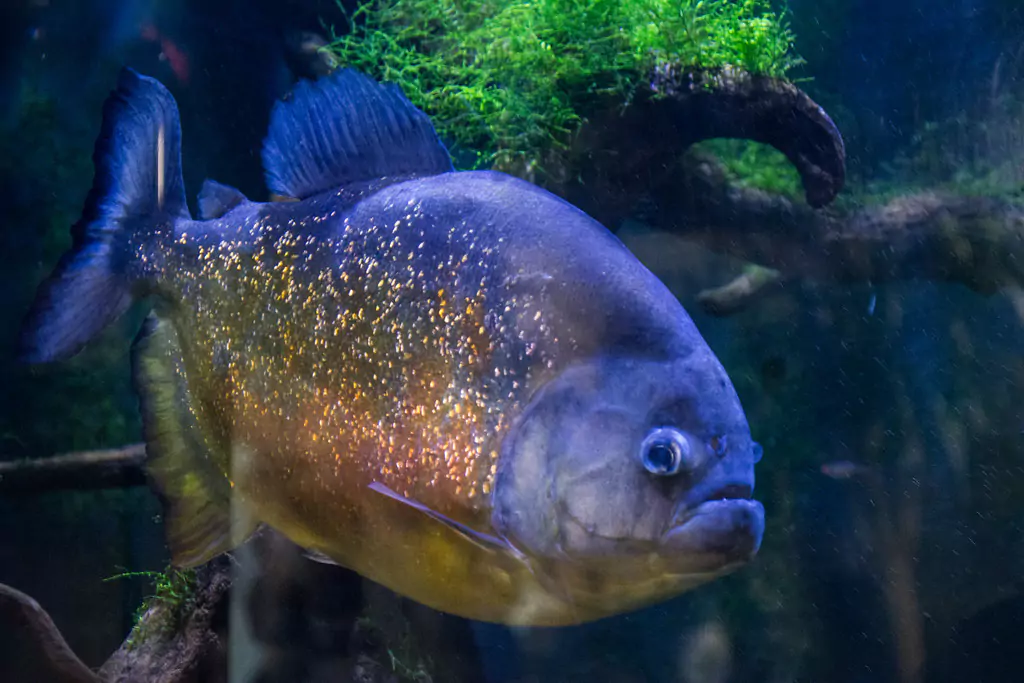
Parrotfish (Various Species)
Parrotfish, with their powerful jaws, may inadvertently damage or uproot plants while foraging for food. Their feeding behavior, if not carefully monitored, can compromise the structural integrity of the planted aquascape.
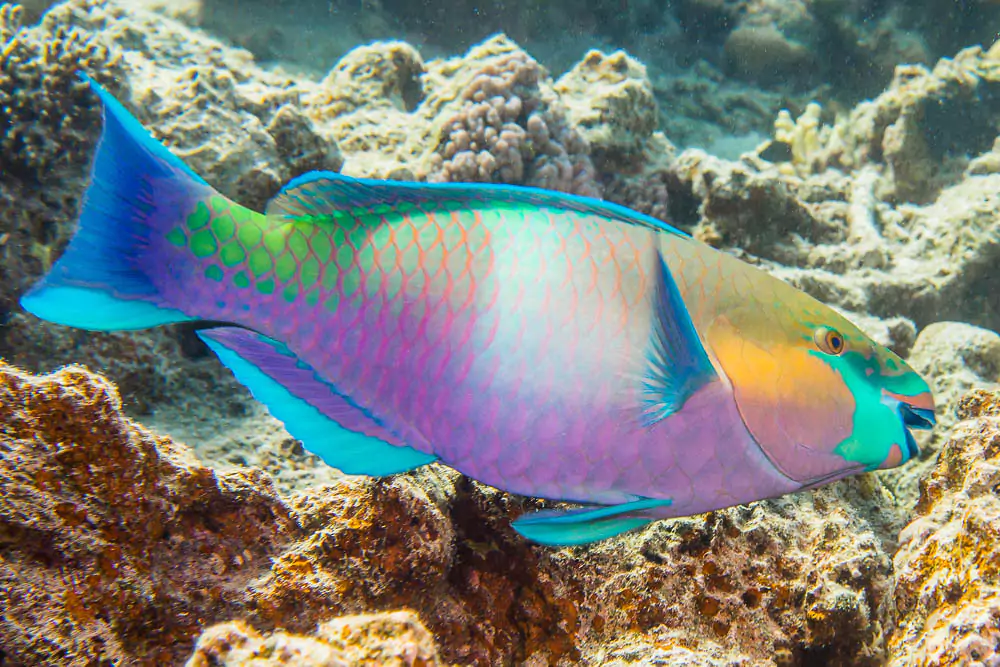
Gold Severum (Heros severus)
Despite their peaceful demeanor, Gold Severums have a tendency to nibble on plant leaves. While not as destructive as some other species, their grazing behavior may still impact the visual appeal of the planted aquarium.
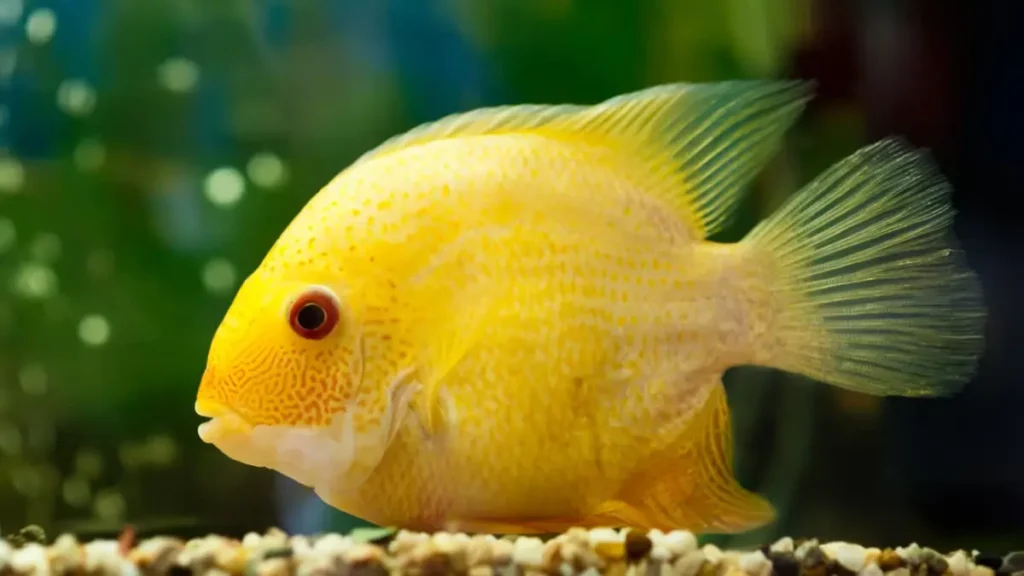
Mitigation Strategies
- Selecting Herbivore-Friendly Plants: Choose plant species with tougher leaves that are less palatable to herbivorous fish, reducing the risk of damage.
- Introducing Herbivore-Resistant Species: Opt for fish species known for their compatibility with plants, such as tetras, rasboras, or corydoras, which are less likely to engage in plant-eating behaviors.
- Regular Monitoring and Feeding: Keep a close eye on the behavior of herbivorous fish and ensure they receive a well-balanced diet to discourage excessive grazing on plants.
In the verdant realms of planted aquariums, the potential threat posed by plant-eating fish necessitates a strategic approach to maintain the vitality of aquatic flora. By carefully selecting compatible plant species and introducing herbivore-resistant fish, aquarists can foster a lush underwater haven where both plants and fish coexist harmoniously.
Bottom-Dwelling Fish Considerations
Corydoras Catfish (Various Species)
While adored for their charming appearance, some Corydoras species may exhibit a penchant for digging into the substrate, potentially uprooting delicate plants and disturbing the carefully arranged aquascape.
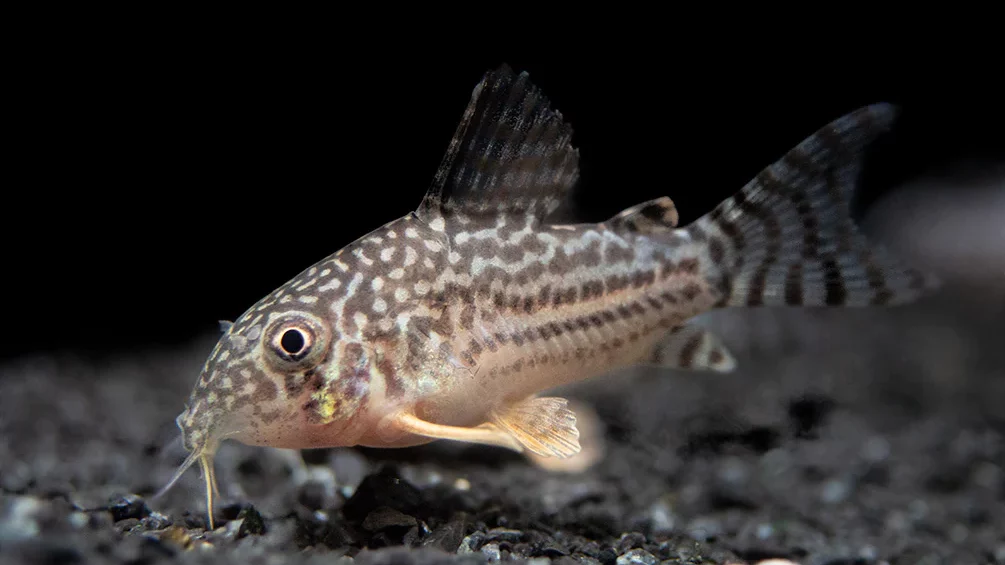
Kuhli Loach (Pangio kuhlii)
The playful and slender Kuhli Loach, while a delightful addition, may burrow into the substrate in search of hiding spots. This behavior poses a risk to the stability of plants and may disrupt the overall aesthetic appeal of the planted aquarium.

Yoyo Loach (Botia almorhae)
Known for their active and social nature, Yoyo Loaches may engage in substrate-disturbing activities, including sifting through the gravel. This behavior can lead to substrate displacement and potential damage to plant roots.
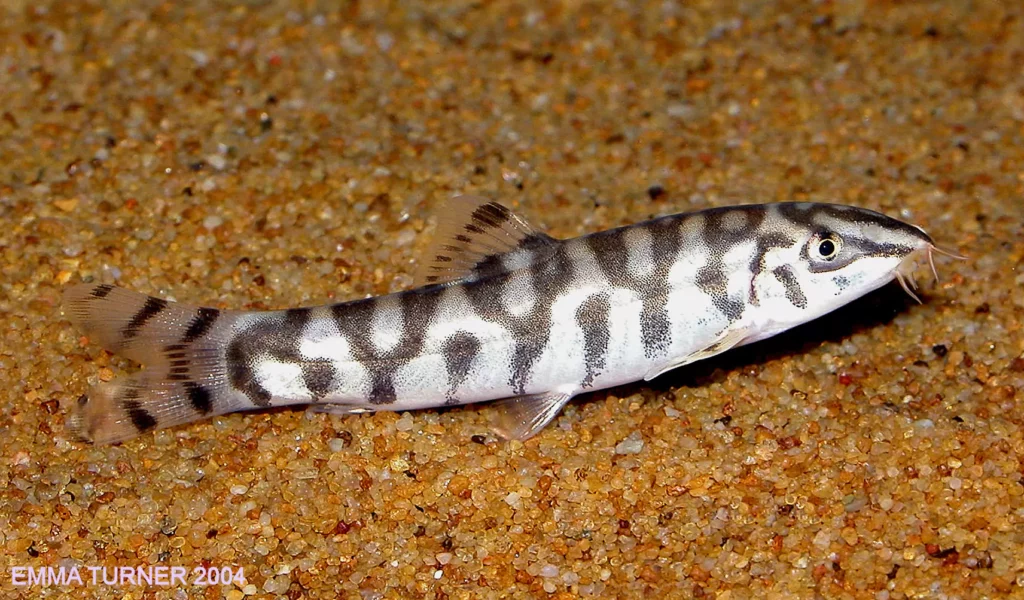
Mitigation Strategies
- Selecting Substrate-Friendly Plants: Opt for plants with robust root systems that can withstand potential disturbances from bottom-dwelling fish.
- Choosing Non-Digging Alternatives: Consider alternative bottom-dwelling species like dwarf shrimp, snails, or small peaceful catfish species that are less likely to engage in substrate-disturbing behaviors.
- Providing Adequate Hiding Places: Enhance the aquarium with decorations and caves that offer hiding spots for bottom-dwelling fish without the need for excessive digging.
In the intricate tapestry of planted aquariums, the challenges posed by bottom-dwelling fish necessitate a thoughtful approach to ensure both plant health and the well-being of aquatic inhabitants. By strategically selecting plants and introducing bottom-dwelling species with less disruptive behaviors, aquarists can create a balanced and visually pleasing underwater environment where plants and fish coexist seamlessly.
Fish Size and Tank Size Considerations
Importance of Size Harmony
Ensuring a harmonious environment in a planted aquarium hinges on maintaining a proportional balance between the size of the fish and the tank. A mismatch can lead to overcrowding, stress, and potential health issues for both the fish and the plants.
Guidelines for Tank Size
Different fish species have varying space requirements. Provide guidelines on tank sizes suitable for specific species, emphasizing the need for research before introducing fish to an aquarium.
Small Tanks and Micro Fish
Micro fish species, such as Rasboras or Endler’s Livebearers, thrive in smaller tanks. Highlight the benefits of nano aquariums for these diminutive aquatic companions, ensuring a comfortable and visually appealing space.
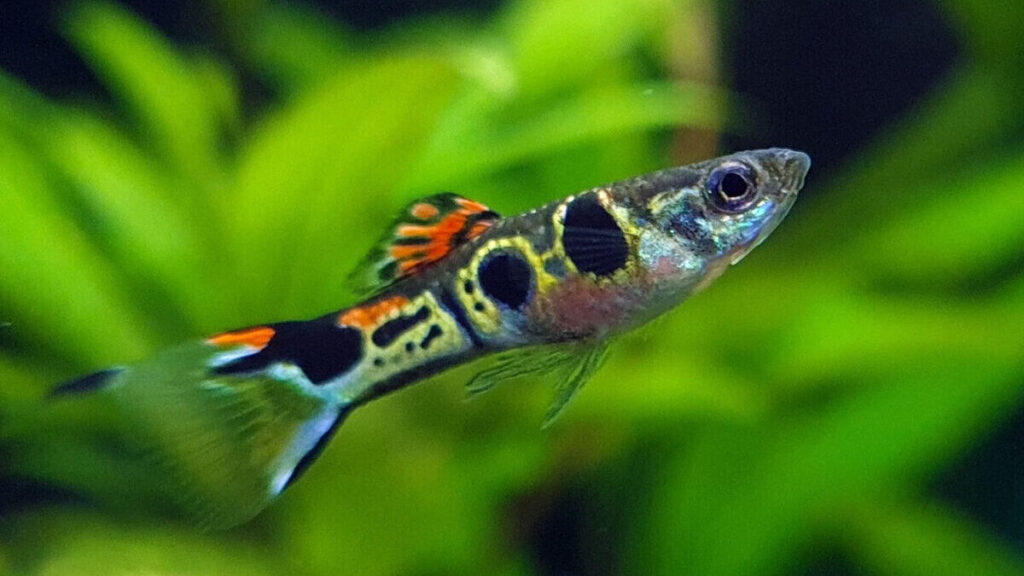
Medium Tanks and Community Fish
Moderate-sized tanks are ideal for popular community fish like tetras and gouramis. Discuss the advantages of a well-planned community setup, considering both the spatial needs of the fish and the aesthetics of the planted environment.
Large Tanks and Majestic Fish
Majestic and larger fish, such as Discus or Angelfish, necessitate more substantial tanks. Explore the benefits of larger tanks in providing ample swimming space, minimizing territorial conflicts, and supporting the overall well-being of these grand aquatic companions.
Mitigation Strategies
- Research Before Purchase: Encourage aquarists to thoroughly research the expected size and spatial requirements of fish species before acquiring them.
- Avoiding Overstocking: Emphasize the importance of avoiding overstocking, which can lead to heightened competition for resources and increased waste production, negatively impacting the planted aquarium.
In the intricate ballet of aquatic life, the correlation between fish size and tank size is a pivotal factor for a flourishing planted aquarium. By aligning the spatial needs of fish with appropriately sized tanks, aquarists can orchestrate an environment where both fish and plants coexist in a balanced and visually captivating underwater symphony.
Conclusion
In conclusion, the artistry of a planted aquarium unfolds at the intersection of meticulous planning and thoughtful fish selection. As we navigate the intricate balance between aquatic flora and finned companions, the importance of choosing the right fish becomes paramount. The key to a thriving planted aquarium lies in the harmony achieved through careful consideration of fish compatibility, behavior, and size. By avoiding high-maintenance, aggressive, or substrate-disturbing species, enthusiasts can safeguard the vitality of their aquatic plants and foster an ecosystem where both flora and fauna flourish.
As stewards of underwater realms, our responsibility extends beyond the aesthetic appeal to the delicate interplay between diverse aquatic life forms. Through informed research and planning, we not only enhance the beauty of our planted aquariums but also contribute to the sustainability and longevity of this captivating aquatic endeavor. A conscientious approach to fish selection ensures that every inhabitant, from the smallest fry to the most elegant aquatic plant, finds its place in a thriving, harmonious underwater sanctuary. As you embark on your journey into the realm of planted aquariums, may your choices reflect the careful balance that transforms an aquarium into a living masterpiece.
Additional Resources
For those eager to delve deeper into the nuanced world of planted aquariums and informed fish selection, additional resources serve as invaluable guides on this aquatic journey. Here are some reputable forums and books that offer a wealth of knowledge for enthusiasts seeking further information
Reputable Forums
- The Planted Tank Forum: A comprehensive forum covering all aspects of planted aquariums, providing a platform for sharing experiences, troubleshooting issues, and exchanging advice on fish compatibility.
- Fishlore Aquarium Fish Forum: A welcoming community where aquarium enthusiasts discuss various aspects of fishkeeping, including tips on choosing fish for planted tanks and maintaining a balanced ecosystem.
Reputable Books for Further Reading
- Ecology of the Planted Aquarium by Diana Walstad: A seminal work by Diana Walstad that delves into the ecological dynamics of planted aquariums, offering in-depth insights into creating and maintaining a thriving aquatic environment.
- The 101 Best Aquarium Plants by Mary E. Sweeney: Mary E. Sweeney’s guide provides a detailed exploration of various aquarium plants, their characteristics, and practical tips for their successful cultivation.
- Aquarium Plants by Christel Kasselmann: Christel Kasselmann’s book is a comprehensive resource on aquarium plants, offering a detailed guide to their selection, care, and integration into planted tank ecosystems.
These resources serve as pillars of knowledge, empowering enthusiasts to make informed decisions in creating and maintaining their planted aquariums. Whether seeking community engagement or delving into the depths of aquatic literature, these links offer a wealth of information to further enrich your journey in the captivating world of planted aquariums.
Frequently Asked Questions (FAQs)
1. Which fish species should I avoid in a planted aquarium due to their high-maintenance nature?
High-maintenance fish species, such as Discus and Arowanas, may pose challenges in a planted tank. Their specific requirements for water parameters and care can be demanding, impacting the well-being of both plants and other tank inhabitants.
2. Are there aggressive fish species that can harm plants and disrupt the balance of a planted aquarium?
Yes, certain aggressive fish like Oscars and Tiger Barbs may engage in destructive behaviors, causing damage to plants and creating a stressful environment for other tank inhabitants. Careful consideration of fish compatibility is crucial to maintain harmony.
3. What are the risks associated with plant-eating fish, and are there alternatives that won’t damage vegetation?
Plant-eating fish, such as Silver Dollar Fish and Pacus, pose risks of nibbling on or uprooting plants. Opting for alternatives like Otocinclus Catfish and Rasboras, which have minimal impact on vegetation, can help maintain the integrity of the planted aquarium.
4. How can the behavior of bottom-dwelling fish impact the substrate and plant roots in a planted tank?
Certain bottom-dwelling fish, like certain Corydoras species and Plecostomus, may disturb the substrate and uproot plants. Choosing alternatives such as Kuhli Loaches and Bristlenose Plecos, which exhibit less disruptive behaviors, can mitigate these challenges.
5. Why is it important to match fish size with the tank size in a planted aquarium?
Mismatched proportions can lead to issues such as overcrowding and inadequate swimming space, impacting the health of both fish and plants. Researching and adhering to guidelines for appropriate tank sizes based on fish species is essential for a balanced and thriving aquatic environment.


